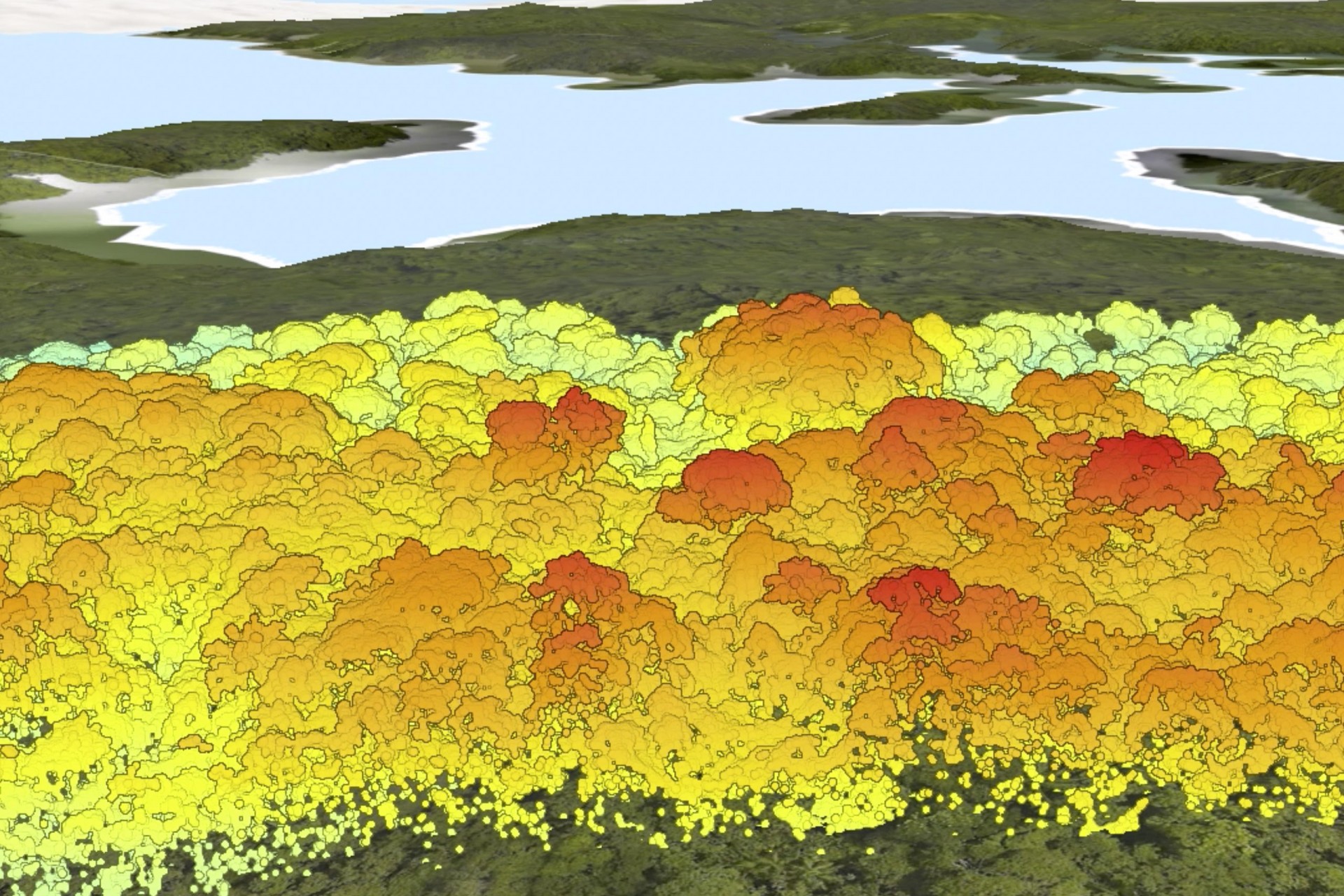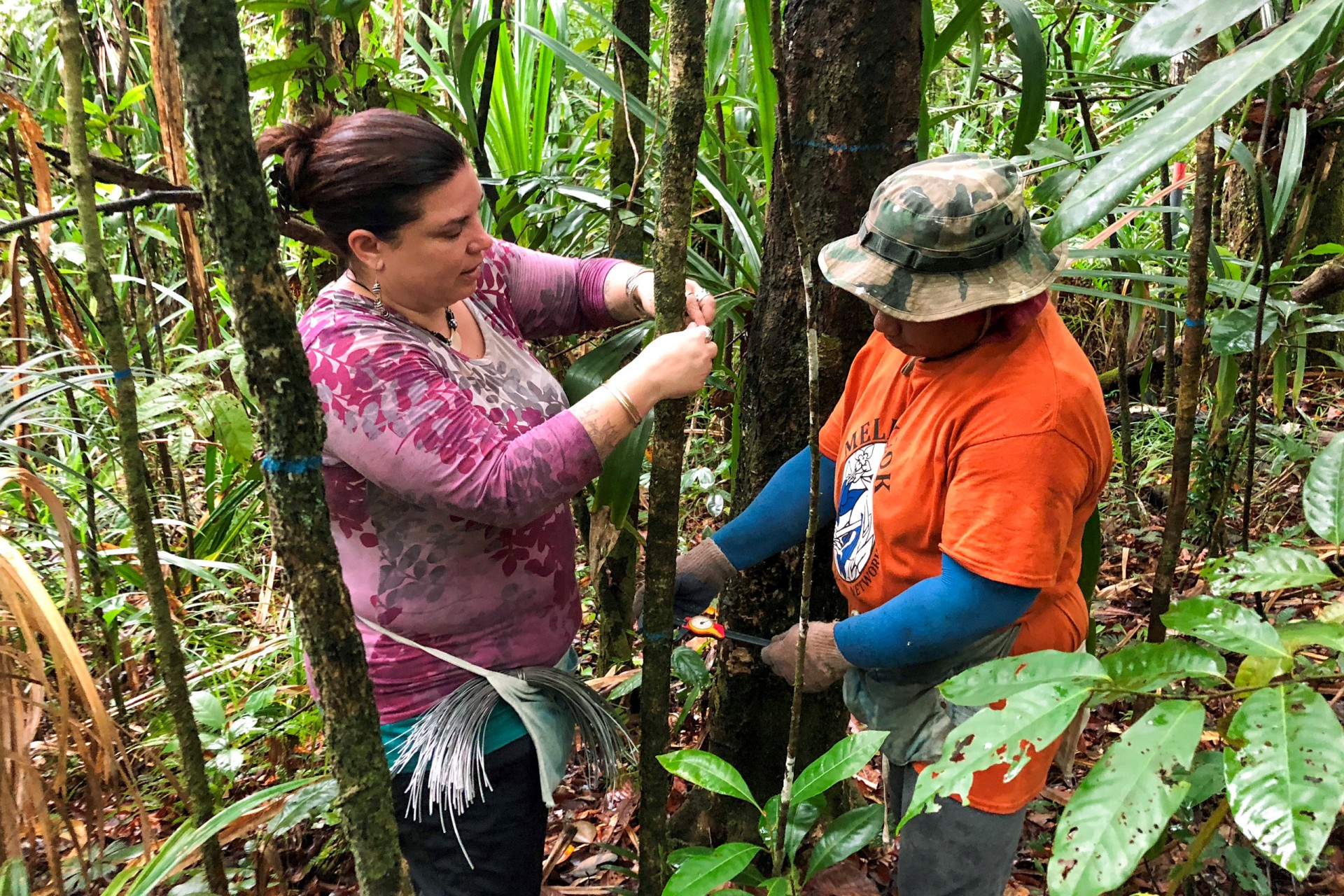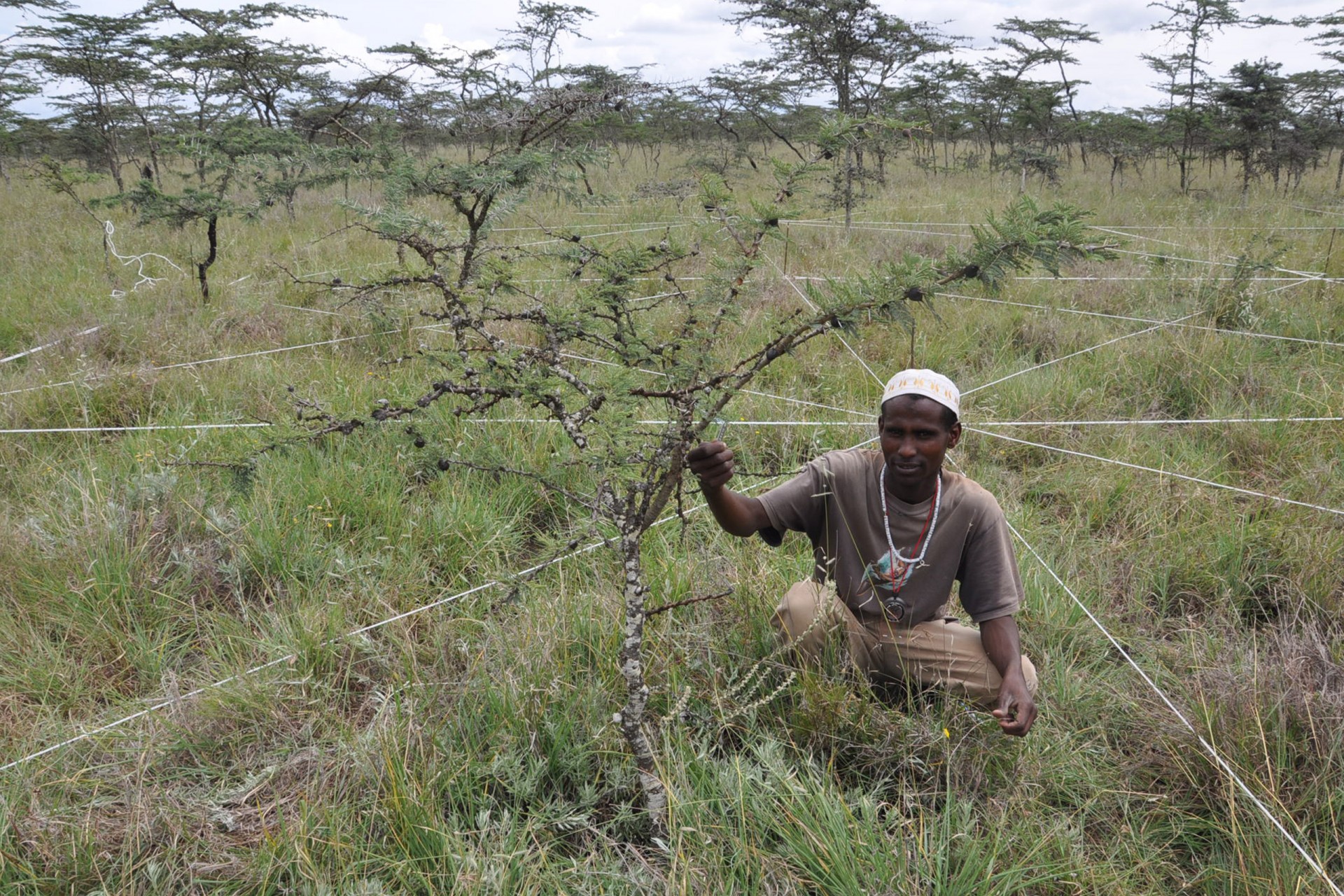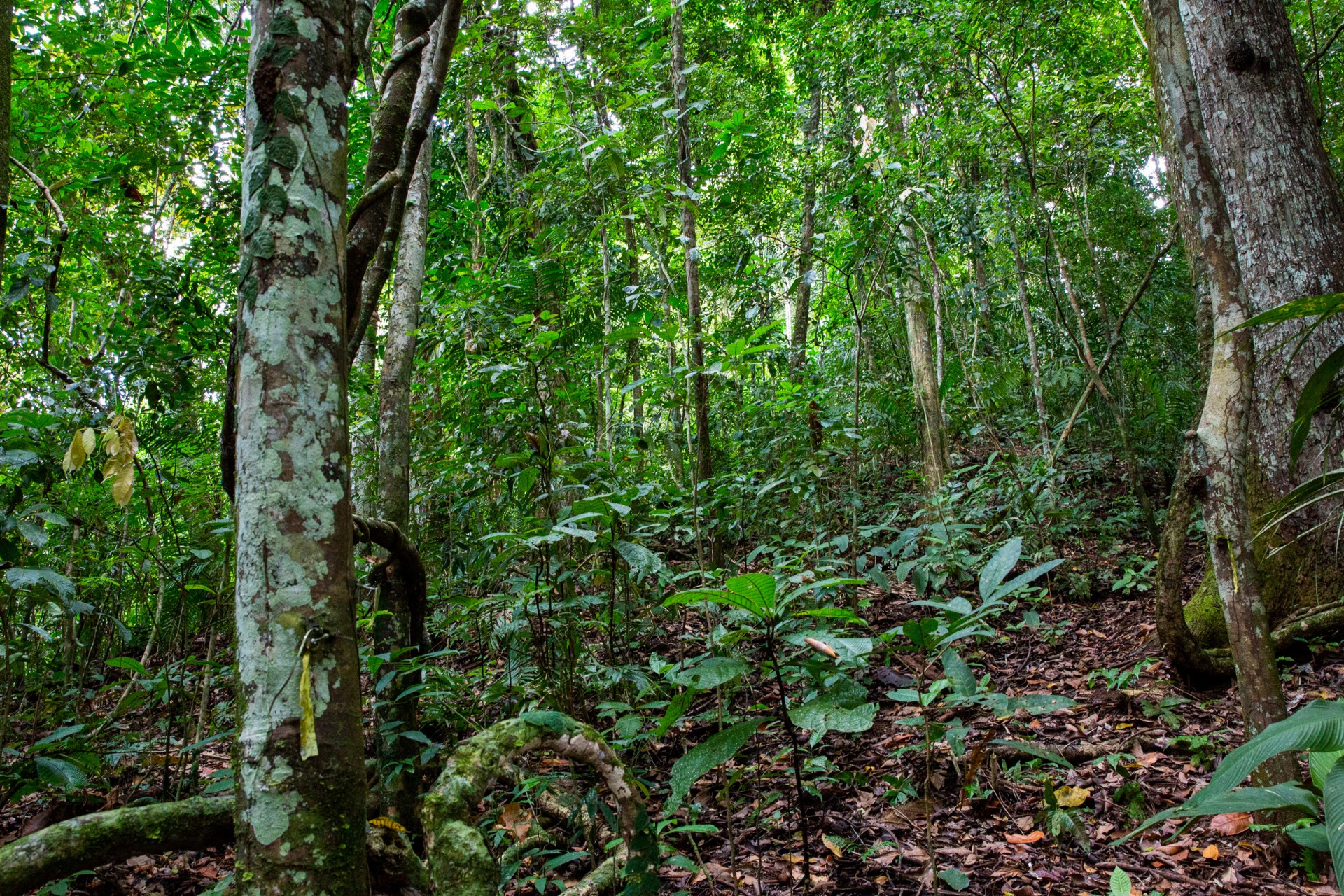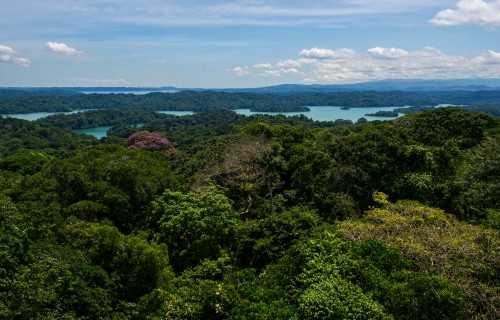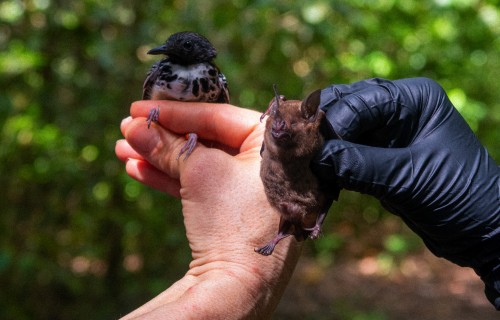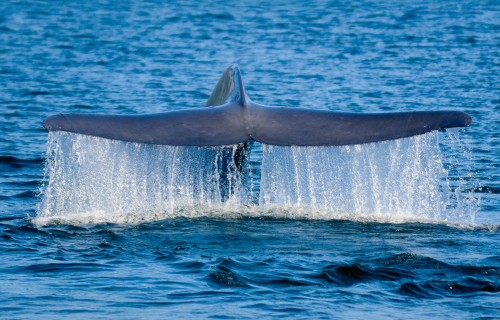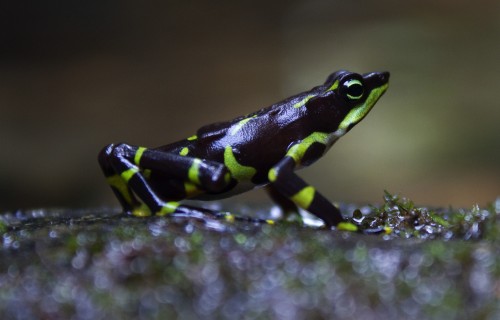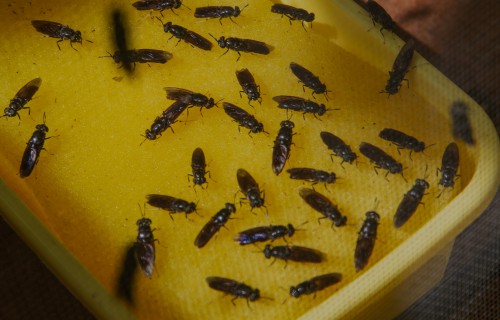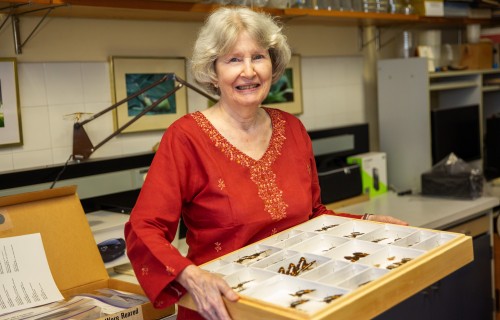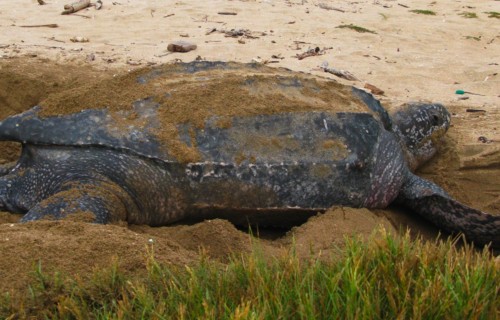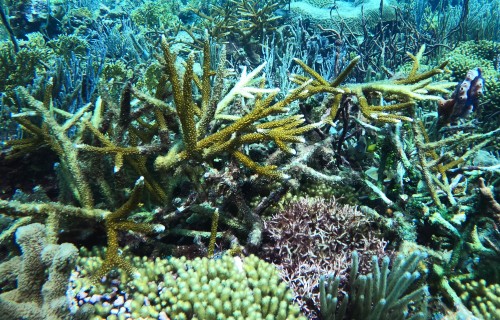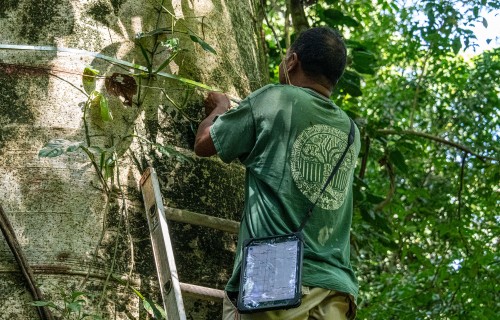Above the tropical forest canopy,
sensors capture the fluxes of gases
between the trees and the atmosphere
Generous
Grant
Smithsonian Receives $12 Million from the Gordon and Betty Moore Foundation for forest carbon verification with GEO-TREES
Grant Supports the Smithsonian’s Leadership Role in Bringing the Global GEO-TREES System Online
The Gordon and Betty Moore Foundation granted the Smithsonian Tropical Research Institute (STRI) $12 million to support GEO-TREES, a partnership of a dozen research organizations providing a free, definitive standard for quantification of forest carbon everywhere, in real time. Using a combination of ground-based and aerial measurements of forests, the GEO-TREES project aims to provide a single standard through which countries, companies and landowners will be able to easily and accurately estimate carbon storage, and change in carbon storage, for any forest on the planet.
Currently, to prevent the buildup of carbon dioxide, an important greenhouse gas that traps the heat of the sun inside the Earth’s atmosphere, organizations that emit significant amounts of carbon dioxide offset their emissions by choosing or creating a project that removes an equal or greater amount of carbon from the atmosphere. This project could involve conserving existing forests, allowing forests to regrow on abandoned pastureland or engaging in Smart Reforestation, a process for optimizing land use to balance reforestation with agricultural and economic needs. To ensure they are evenly balancing their emissions and offsets, these organizations must acquire accurate estimates of the amount of carbon saved by their reforestation efforts.
“We have been measuring global temperatures since 1880; the hottest year ever was last year, and the hottest 10 years on record were all in the past 19,” said Joshua Tewksbury, STRI director. “We’ve only had a taste of the fast-approaching climate change chaos, and every ton of carbon we take out of the atmosphere today helps reduce that chaos going forward. Right now, growing trees is the only way to lock up carbon at scale, and because other methods of removing carbon are still too expensive, untested or have yet to scale, growing trees accounts for nearly all current carbon removal efforts. This is why we desperately need a trustworthy way to measure forest carbon.”
Organizations often contract independent companies or groups to measure and verify how much carbon is stored by their forests. These methods, however, may differ from project to project, making it a challenge to standardize carbon storage estimates. Meanwhile, space agencies and private companies invest billions in satellites to image forests from above in real time, but because no two forests contain the same concentration of carbon, these measurements must be calibrated using high-quality, standardized, ground-based measurements.
GEO-TREES uses complementary approaches, including ground-based measurement of trees, soil carbon sampling and ground- and air-based laser scans to collect real-time estimates of carbon storage. The estimates are used to calibrate satellite measurements and form the foundation for actionable valuation of forest carbon sequestration services. All data will be made freely available online, and the grant from the Gordon and Betty Moore Foundation will enable STRI to apply this approach to more tropical forests worldwide.
“We are deeply grateful for the critical support of the Gordon and Betty Moore Foundation,” said Lonnie Bunch, Secretary of the Smithsonian. “This transformational gift significantly accelerates our scientists’ efforts to develop reliable and scalable tools to quantify and verify carbon stored in forests, research the Smithsonian and our global colleagues need to create sustainable environments for our shared future.”
The GEO-TREES project is hosted at STRI. It is a collaboration of 12 partners: STRI’s ForestGEO; ForestPlots.net; TmFO; the U.S. National Science Foundation; Group on Earth Observations; the Centre National d’Études Spatiales, France; Centre National de la Recherche Scientifique, France; University of Leeds, U.K.; International Institute for Applied Systems Analysis, Austria; NASA; ONEforest, France; and the European Space Agency. The Bezos Earth Fund and the Gordon and Betty Moore Foundation each support the network with a donation of $12 million.
At the heart of the GEO-TREES system is the Smithsonian’s own ForestGEO network, which began with a single plot on Barro Colorado Island in Panama in 1980. ForestGEO has since expanded into the most extensive, long-term, large-scale, forest-monitoring network on the globe, representing researchers at 78 study sites in 29 countries.
“Forests are the most important terrestrial carbon sink,” said Stuart Davies, STRI’s Frank H. Levinson Chair of Global Forest Science and senior staff scientist, who directs ForestGEO and coordinates the Smithsonian’s involvement in GEO-TREES. “In the past 40 years, we’ve built a diverse global partnership of scientists on the ground on every continent: expert botanists and foresters who know these forests better than anyone. By working as a team, we collect and analyze data to push the frontiers of understanding of the importance of forests to life on Earth.”
The Gordon and Betty Moore Foundation has granted over $30 million to the Smithsonian since 2006 for a variety of projects from astrophysics and biodiversity research to the development of educational tools for youth on various science and sustainability topics. The foundation’s support for GEO-TREES aligns with its commitment to strengthen scientific knowledge and conserve biodiversity. By investing in the GEO-TREES project, the foundation is helping to build a sustainable future for the planet.
“This is an ambitious and important global team science effort,” said Jon Kaye, program director at the Gordon and Betty Moore Foundation. “The on-the-ground and remote sensing approaches that will be coordinated to measure forest carbon at an unprecedented level of precision sets GEO-TREES apart. The novel combination of technologies deployed will improve our understanding of terrestrial carbon dynamics and will quantify how preservation of forests can mitigate the impacts of climate change.”
About the Smithsonian Tropical Research Institute
Headquartered in Panama City, Panama, STRI is a unit of the Smithsonian Institution whose mission is to understand tropical biodiversity and its importance to human welfare, trains students to conduct research in the tropics and promotes conservation by increasing public awareness of the beauty and importance of tropical ecosystems. Watch STRI’s video and visit the institute on its website and on Facebook, X and Instagram for updates.
About the Smithsonian Institution
Since its founding in 1846, the Smithsonian Institution has been committed to inspiring generations through knowledge and discovery. It is the world’s largest museum, education and research complex, consisting of 21 museums, the National Zoological Park, education centers, research facilities, cultural centers and libraries. Two of the 21 museums—the National Museum of the American Latino and the Smithsonian American Women’s History Museum—are in the early planning stages. The Smithsonian Campaign for Our Shared Future, which began in 2018 in a quiet phase, was publicly launched this September 2024 with a goal of $2.5 billion. www.si.edu

